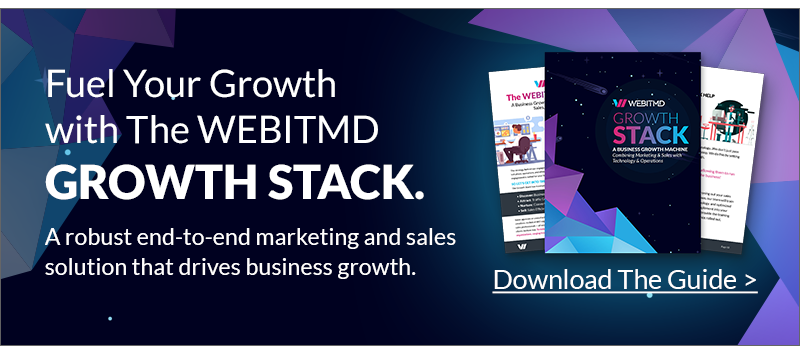As a business owner, you’re probably familiar with some of the digital marketing jargon. And it’s very likely that you heard about Google algorithms. However, it’s also probable that you’re not 100% sure what this is about or how it impacts your business’ digital marketing strategy.
This article intends to clean up some of the rubbish around this topic and contribute with a clear vision about it. From the basics to what Google algorithms are, to how their updates affect your content and website.
What are Google Algorithms and Their Updates?
Google’s algorithms are a set of complex ranking systems designed to sort through the billions of websites on the internet and retrieve the most accurate result to a query. Google’s success in doing this was what basically made it become the internet giant it is.
The Google algorithm updates you probably heard so much about are exactly that: specific updates on a specific algorithm (or set of algorithms) that aim to refine or improve a specific aspect of users’ searches. Many of these updates received names after animals like Panda, Penguin, or Hummingbird; or names that were directly related to their functions. It’s worth mentioning that when we hear these names, they apply to the updates; not the algorithms.
How Many Google Algorithms Updates Are There?
Back in its first few years of existence, Google just made a few updates in its search algorithms. Ever since then, algorithm updates can be major or minor, and they’re hardly ever announced by Google. The first major algorithm update was created in 2003 under the name of Google Florida and was aimed at websites using spammy techniques like keyword stuffing, hidden links, among others.
Ever since then, Google has come up with new updates to refine searches. There’s been several of them, and counting each one would be extremely long and tedious. Here are the main ones you should remember and what were they about:
Panda (2011)
This update started to implement the now-famous ‘quality score’ to websites, which also became a ranking factor. It aimed to duplicate content, keyword stuffing, plagiarism, thin content, and user-generated spam.
Penguin (2012)
The update specifically attacked spammy, irrelevant links, and/or over-optimized anchor texts; websites with unnatural backlinks, or simply low-effort link building.
Hummingbird (2013)
It allowed Google to better interpret search queries and search intent at the moment of providing a result. Although keywords are still important, this update allowed content to rank for certain queries even if they don’t specifically contain the exact words the user typed to find it (meaning another setback to keyword stuffing).
Rankbrain (2015)
As a part of Hummingbird, this machine learning system helps Google understand the meaning behind the user’s query and take into account synonyms, implied words, and even each user’s personal search history.
Bert (2019)
It started implementing natural language processing technology to also understand the meaning of each user’s query, interpret text, identify entities and their relationships. By ‘entity’ we understand anything or anyone notable enough for users to search by the name. So for example, if you type ‘Quentin Tarantino’ you’ll obtain results related to his biography, filmography, recent news, etc.
If you’re still curious about all of Google algorithms and their evolution, here are a few useful sources for you:
List of Google algorithm updates that came up between 2010 and 2020
Marie Hanes Consulting’s Complete List of Google Algorithms Changes
Search Engine Journal’s History of Google Algorithm Updates
How Do Algorithm Updates Affect Your Business?
As you probably saw in the list of updates below, algorithm updates don’t really intend to ‘punish’ anybody. The actual purpose is to make it possible for users to obtain what they’re looking for as accurately and rapidly as possible; and even better, anticipate their intentions by providing them with something they want but were not exactly looking for when they started their query.
And whether we like it or not, websites not providing that, or pretending to do it as an easy, fast ( did anybody say ‘black-hat’?) way to rank on SERPs, are usually the first to fall.
Sometimes both business owners and SEO experts go crazy behind metrics and red numbers. And while it is important to keep an eye on them, and certain practices like keyword research will never die, it’s more and more about quality and contribution.
Are you providing anything useful and valuable? Are you answering somebody else’s questions? If so, are you making it easy for that person to obtain that answer? And even more importantly, is that quality content generating any real conversions to your business?
These, and many other healthy questions, are a good start to a successful digital marketing strategy.
Show Your Secret Sauce to The World
Google’s algorithm updates are rarely announced because it’s not a matter of catching up with them in order not to lose rankings. When we’re talking about ‘complying with Google’s guidelines it’s not in a way of some sort of ‘internet police’ that is out there to punish you.
The internet changes. Users change. Markets change. And rather than being a frightening thought, this should be seen as an opportunity. Who’s better than yourself to talk about your business? Who’s better than you to say what your clients are looking for and even better, what do YOU have so special that they want?
At WEBITMD, we work as an external appendix of your company rather than a typical vendor. And when it comes to your brand’s voice and content, our brand story workshop is an invaluable tool. With it, you and we can go over those pain points your clients have, those questions they might be asking now, and re-discover everything that makes your business so special in your industry.
The Brand Story is the backbone of WEBITMD’s Growth Stack, a solid full-funnel marketing and sales solution that generates palpable results both in your conversions and online presence. Together, we can come up with your own “secret sauce” to make your website and content irresistible to both users and search engines.






.jpg)



.jpg)





![5 Reports to Elevate Your HubSpot Sales Dashboard [+ Examples]](https://blog.webitmd.com/hs-fs/hubfs/Imported_Blog_Media/6-winning-examples-of-a-hubspot-sales-dashboard-2.png?width=767&name=6-winning-examples-of-a-hubspot-sales-dashboard-2.png)